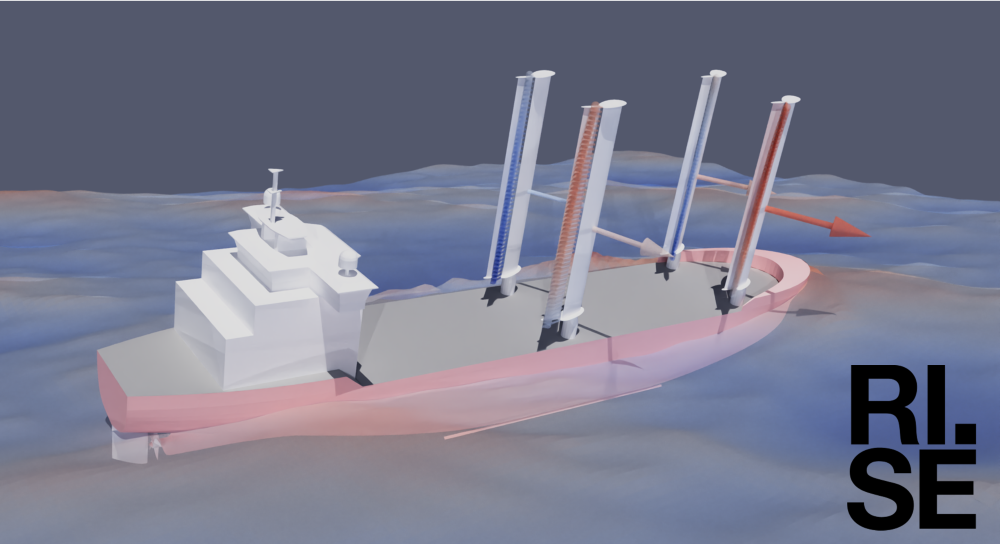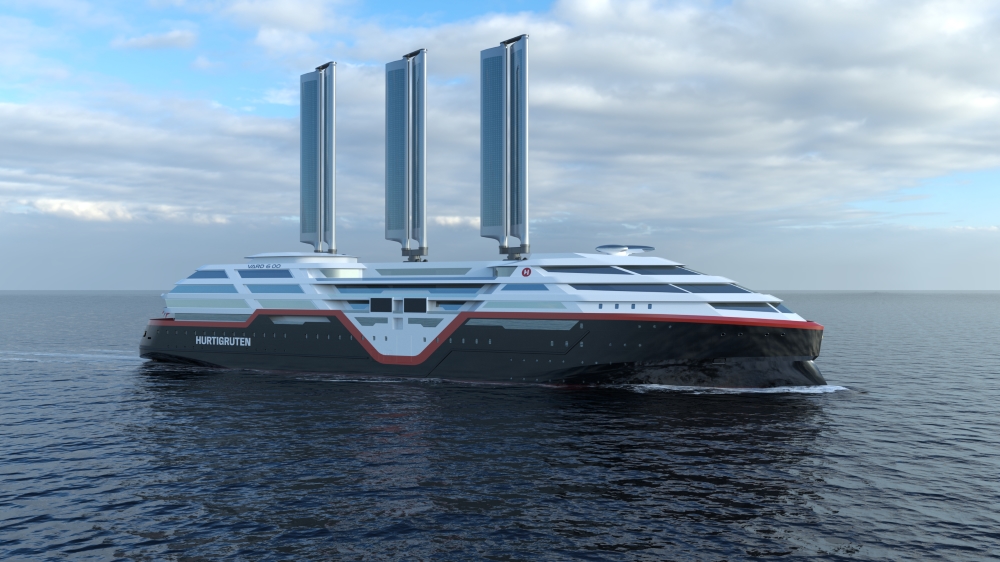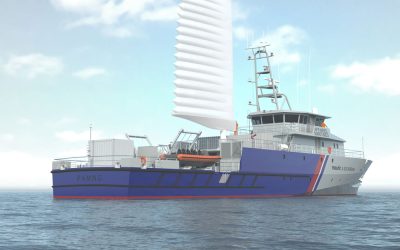Carefully curated agenda to take a focused look at recent technological, design and policy developments shaping the future landscape for wind-assisted propulsion
Since its inauguration in 2019, the now annual Wind Propulsion Conference has become an essential event for the maritime community, with attending speakers and delegates spanning the technology companies, academia, shipowners and industry associations. Against a backdrop of tightening environmental regulations and an increasing need to develop and apply innovative alternative power and propulsion technology for ships, this year’s conference – hosted by RINA in association with the International Windship Association and to be held on 22-23 October at IMO’s historic headquarters in the heart of London – promises to be another must-attend event.
Wind Propulsion 2024’s carefully curated agenda will bring those attending fully up to speed with the recent technological, design and policy developments shaping the future landscape for wind propulsion technology. The conference is designed to include regular breaks to provide delegates with the opportunity to network, engage in one-on-one conversations and knowledge share.
This year, Lars Robert Pedersen, deputy secretary general of BIMCO, will deliver the conference’s opening keynote speech. Speakers at the two-day event also include experts from bound4blue, ABS, DNV, Bureau Veritas, SINTEF Ocean, Sumitomo Heavy Industries Marine & Engineering, Hapag-Lloyd, MARIN, BAR Technologies, the University of Southampton, Delft University of Technology and Research Institutes Sweden (RISE), amongst others. A preliminary programme is available to view on the RINA website, but to get a flavour of what attendees can expect, TNA spoke to a few of the presenters:
Wouter Van der Velden, Dassault Systèmes: “Our presentation showcases how unified engineering software solutions enhances the aerodynamic performance and structural integrity of wind propulsion systems, providing a sustainable alternative to traditional fuel-based propulsion. Dassault Systèmes’ PowerFLOW is crucial in this advancement, utilising the Lattice Boltzmann Method to simulate realistic wind behaviour in complex maritime environments. Its automatic meshing and parallel processing capabilities improve efficiency, offering designers precise insights to develop innovative and cost-effective wind propulsion solutions with significant environmental and economic benefits.”
Anders Alterskjær, SINTEF Ocean: “In collaboration with SINTEF Ocean and 12 other partners, Hurtigruten Norway, through the SeaZero project, is aiming to develop zero-emission ships specially adapted to the Norwegian coast for the long-established ‘Coastal Express Route’. Key to enabling zero-emission operations within maritime sector in general and also for Hurtigruten is reducing energy consumption to a minimum. Although the potential of wind propulsion technologies has by now been verified in a number of projects, studies and full-scale installations, the Hurtigruten case poses a few specific challenges with respect to incorporating wind propulsion in the vessel design and operation. Our presentation focuses on some of these challenges, such as interaction with other energy saving technologies, stability and weight requirements, numerous bridge and power cable passings, rapidly varying wind conditions and, last but not least, manoeuvring in the narrow Norwegian fjords. We’ll present what we have learned through our efforts to overcome these challenges and what energy savings we predict can be achieved.”
Anton Kisjes, MARIN: “Obviously, it is of paramount importance that emission and fuel savings are maximised for wind propulsion to reach its biggest potential. However, as installations get bigger, their impact on operation increases, including on manoeuvring and seakeeping. The question is how safety, operability and compliance changes with substantial wind propulsion. Within the OPTIWISE project, collaborating with Chantiers de l’ Atlantique, MARIN had the opportunity to develop and test a new set-up in our manoeuvring and seakeeping model basin. This set-up allows us to model the aerodynamic loads of the most powerful wind propulsion systems and arbitrary manoeuvres in controlled wave conditions. The performance of the set-up and a case vessel are presented in our paper and presentation.”

Learn more about seakeeping and manoeuvring simulations for wind-powered vessels at the design stage from Research Institutes Sweden
Stavros Kontos, RISE: “To minimise the risk for unexpected poor manoeuvring properties after installation of a wind propulsion system, a thorough assessment should be carried out early, when design changes are still easy to implement. In our paper, we show how multi-fidelity time domain simulations can be used to efficiently assess the manoeuvrability and safety of a wind-powered vessel at an early design stage. Such simulations can also be valuable in discussions with classification societies and other stakeholders.”
Lefteris Karaminas, ABS: “If you are a shipowner, technical manager, or charterer considering sponsoring a wind-assisted propulsion system project then come join us at the conference where I’ll be presenting a methodology on the prediction of propulsion fuel consumption savings, including examples, and sharing findings and recommendations from HAZID/HAZOP workshops.”
Konstantinos Fakiolas, FINOCEAN Ltd: “FINOCEAN’s presentation topic signifies the high importance for any WASP system investment to be adjoined with highly accurate and enhanced wind measuring techniques. Especially for medium to large and very large commercial cargo ships, WASP systems installed on the deck are large sized units which encounter a variety of incoming wind conditions and profiles, depending on their relative location and distancing. The use of existing ship’s bridge anemometer as a sole input for wind measurements is not reliable and can either cause under-performance of WASP units or even unwanted over-performance that cannot be properly adjusted as optimal for the whole ship-WASP units system.
“In the paper, alternative wind sensing methods are presented and analysed with particular focus provided to fibre optic sensors which have shown proof of benefits for enhancing WASP performance. Study cases are analysed which demonstrate the relative performance gains and other useful benefits derived from fibre optic wind sensing, such as structural load analysis on WASP units. The topic is meant to raise awareness to the conference participants for the critical usefulness to include within any WASP system installation such advanced and accurate wind sensing which would boost performance with quite low added CAPEX.”
Maxime Garenaux, MARIN: “To make the most of wind-assisted ship propulsion requires the industry to reshape conventional ship design practices. The traditionally separate fields, such as hydrodynamics and aerodynamics, or even powering, manoeuvring and seakeeping, are increasingly more linked with wind propulsion. Design choices in one field affect choices in another. For this reason, MARIN has developed new holistic design methods, and a versatile early assessment tool called CREATOR. The tool allows the variation of design choices throughout hull design, appendages, propulsion and wind propulsion and it can quickly resolve the impact not only on powering but also manoeuvring, seakeeping and long-term performance using voyage simulation with routing. The outcomes can be used in optimisation to find the optimal ship while satisfying constraints such as limiting ship motions or minimum cargo capacity. During the Wind Propulsion 2024, MARIN will give a demonstration of CREATOR applied to a bulk carrier fitted with rotor sails.”
Saeed Hosseinzadeh, University of Southampton: “Our research, part of the Winds of Change Clean Maritime Demonstration project funded by UKShore and administered by Innovate UK, investigates the potential of wind propulsion technology to decarbonise the UK’s maritime sector. The project is led by Dr Joseph Banks from the University of Southampton’s Maritime Engineering research group, developing software tools to accurately predict the performance of vessels fitted with wind sail technologies, specifically the FastRig wingsails developed by Smart Green Shipping. The two-year programme includes testing a retractable 20m-high FastRig wingsail retrofitted on a commercial ship, combining innovative numerical simulations with experiments in Southampton’s 138m Boldrewood towing tank and RJ Mitchell wind tunnel. The study provides a solid foundation for understanding the hydrodynamic challenges and opportunities presented by wind-assisted propulsion in modern shipping and our findings contribute substantially to the development of performance prediction algorithms, offering a foundation for more accurate modelling and optimisation of wind-assisted vessels.”
To register for Wind Propulsion 2024 or for more information, please visit https://rina.org.uk/events/events-programme/wind-propulsion-2024.




